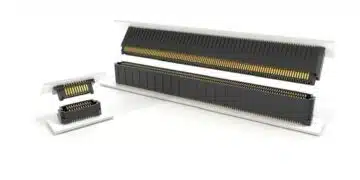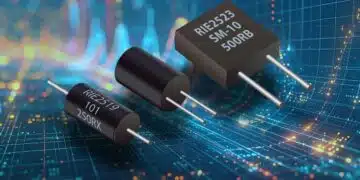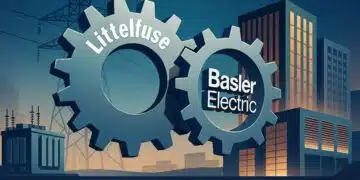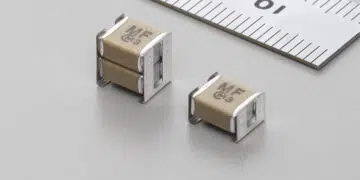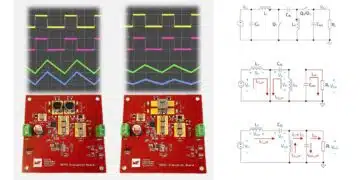SABIC, a global leader in the chemical industry, will reveal at PCIM Asia 2023, new data showing significantly reduced internal dissipation losses in its high-heat ELCRES™ HTV150A dielectric films for potential use in high-temperature film capacitors.
Compared to other high-heat materials like polyethylene terephthalate (PET) and polyethylene naphthalate (PEN), ELCRES HTV150A films can reduce dissipation losses by as much as 40 percent when exposed to temperatures reaching 150°C and frequencies up to 100kHz. Lower dissipation losses in ELCRES HTV150A dielectric films can reduce internal heat generation, increase operating efficiency, and stabilize hot spot temperatures, giving engineers in Asia Pacific greater flexibility in designing capacitors. Lower losses in these films are expected to translate into reduced dissipation losses in capacitors.
ELCRES HTV150A dielectric films are now available to metallizers, capacitor manufacturers and OEMs in the region, and several local Asian companies are validating the films in their capacitors.
“In developing ELCRES HTV150A films, SABIC researchers drew upon their deep understanding of how polymers respond to thermal and electrical stress fields,” said Ed Kung, senior manager, Resin Design and Incubation, SABIC. “They selected material compositions with mild dissipation mechanisms in the temperature and frequency ranges of interest and have achieved impressive results. As customers design new inverter systems and adopt next-generation silicon carbide power modules, lower dissipation losses at higher operating temperatures and frequencies can help drive success.”
LOW INTERNAL LOSSES VS. INCUMBENT MATERIALS
SABIC is working with Japan’s Machine Technologies Co., Ltd., a consulting firm, to study, test and validate the performance of ELCRES HTV150A films in DC link power capacitors for electric vehicle (EV) power train inverters. This ongoing collaboration has confirmed the value of ELCRES HTV150A films in supporting hybrid, plug-in hybrid and battery electric vehicle (xEV) technology.
Recent data from tests on single sheets of film conducted at the SABIC Polymer Processing Development Center in Pittsfield, Mass., indicate that, in contrast to the way other high heat-materials respond, ELCRES HTV150A films exhibit sharply reduced internal dissipation losses when exposed to high frequencies and temperatures. Importantly, these SABIC dielectric films can operate at temperatures up to 150°C, enabling DC link power capacitors to withstand disruptive hotspot temperatures. Competitive high-heat films such as PET and PEN are limited to operating temperatures below 125°C because they demonstrate increased dissipation losses above that point. The ELCRES HTV150A films also deliver excellent retention of dielectric properties through desired temperature and frequency ranges.
“SABIC and Machine Technologies collaboratively support customers by applying a rigorous methodology to test and validate capacitor materials,” said Dr. Tsuyoshi Kasebe, CEO, Machine Technologies. “Data generated through this process can inform capacitor makers about the capabilities of ELCRES films compared to other high-heat materials. As the industry transitions to power transistors based on silicon carbide and other advanced technologies, this data can be valuable in guiding new capacitor designs.”
Machine Technologies is comprised of experts with many years of experience developing and manufacturing capacitors. They are actively involved in the industry, supporting research and development and publishing technical articles.
HIGH PERFORMANCE FOR PROFESSIONAL-GRADE POWER CAPACITORS
ELCRES HTV150A dielectric films are the first in the industry to provide stable performance at operating temperatures of -40°C to 150°C and frequencies up to 100 kHz, while offering stable capacitance, high insulation resistance and good dielectric performance. They address the critical performance gap experienced by traditional polypropylene (PP) films above 105°C. Capacitors built with 3 µm and 5 µm metalized ELCRES HTV150A films pass standard electrical and life tests at 150°C for 2,000 hours with low capacitance change and stable insulation resistance. Other key properties include high breakdown strength over the full temperature range, good self-healing and excellent adhesion to aluminum and zinc during metallization.




